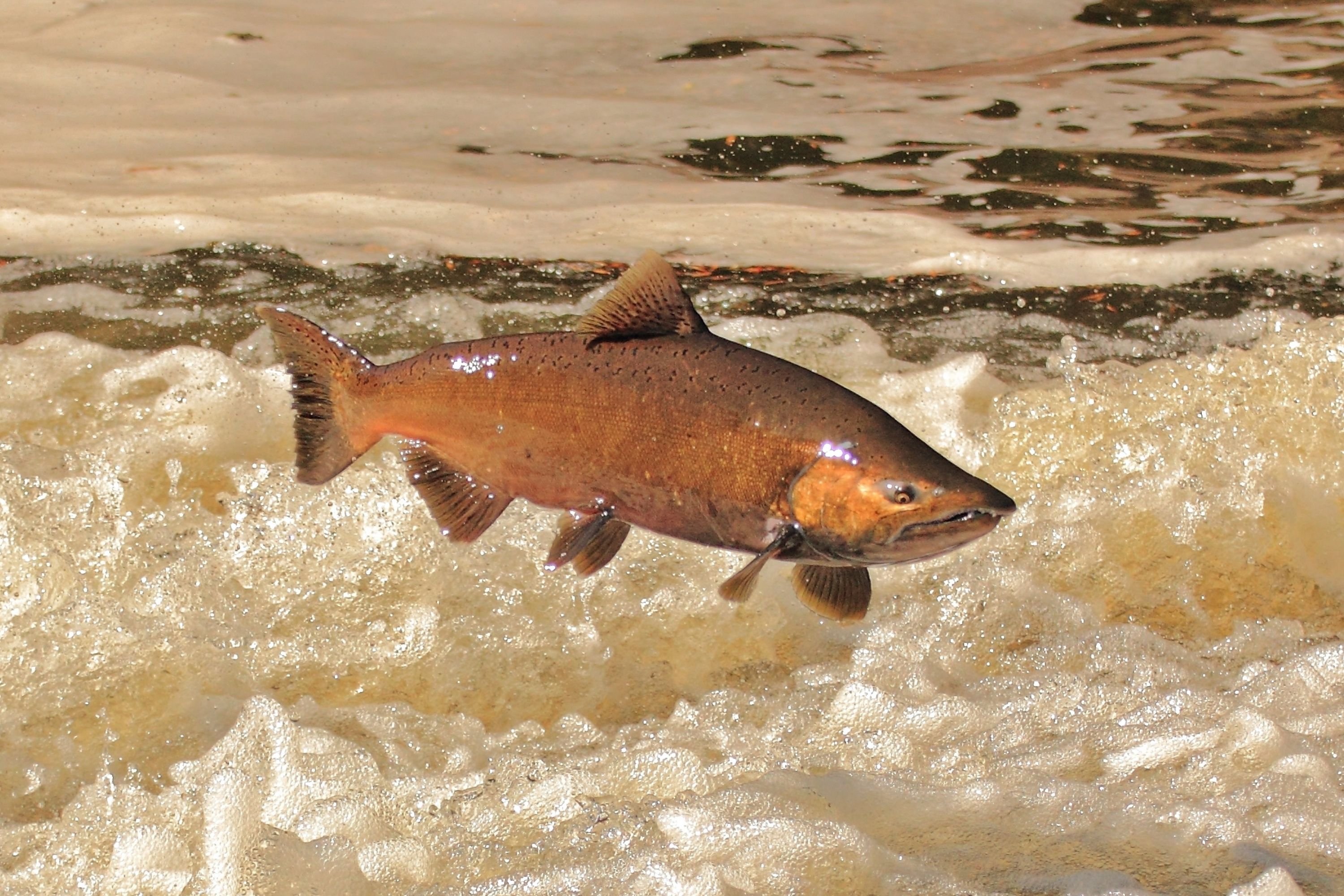Chinook salmon
(Oncorhynchus tshawytscha)

Description
The Chinook salmon (Oncorhynchus tshawytscha) is the largest and most valuable species of Pacific salmon in North America, as well as the largest in the genus Oncorhynchus. Its common name is derived from the Chinookan peoples. Other vernacular names for the species include king salmon, Quinnat salmon, Tsumen, spring salmon, chrome hog, Blackmouth, and Tyee salmon. The scientific species name is based on the Russian common name chavycha. Chinook are anadromous fish native to the North Pacific Ocean and the river systems of western North America, ranging from California to Alaska, as well as Asian rivers ranging from northern Japan to the Palyavaam River in the Arctic northeast Siberia. They have been introduced to other parts of the world, including New Zealand, thriving in Lake Michigan Great Lakes of North America and Michigan's western rivers, and Patagonia. A large Chinook is a prized and sought-after catch for a sporting angler. The flesh of the salmon is also highly valued for its dietary nutritional content, which includes high levels of important omega-3 fatty acids. Some populations are endangered; however, many are healthy. The Chinook salmon has not been assessed for the IUCN Red List. According to NOAA the Chinook salmon population along the California coast is declining, from factors such as overfishing, loss of freshwater and estuarine habitat, hydropower development, poor ocean conditions, and hatchery practices. Historically, the native distribution of Chinook salmon in North America ranged from the Ventura River in California in the south to Kotzebue Sound in Alaska in the north. Recent studies have shown that Chinook salmon are historically native to the Guadalupe River (California) watershed, the southernmost major metropolitan area hosting salmon runs in the United States. Populations have disappeared from large areas where they once flourished, however, shrinking by as much as 40 percent. In some regions, their inland range has been cut off, mainly by dams and habitat alterations: from Southern California, some areas east of the Coast Ranges of California and Oregon, and large areas in the Snake River and upper Columbia River drainage basins. In certain areas like California's Sacramento–San Joaquin River Delta, it was revealed that extremely low populations of juvenile Chinook salmon (less than 1%) were surviving.
Taxonomic tree:







